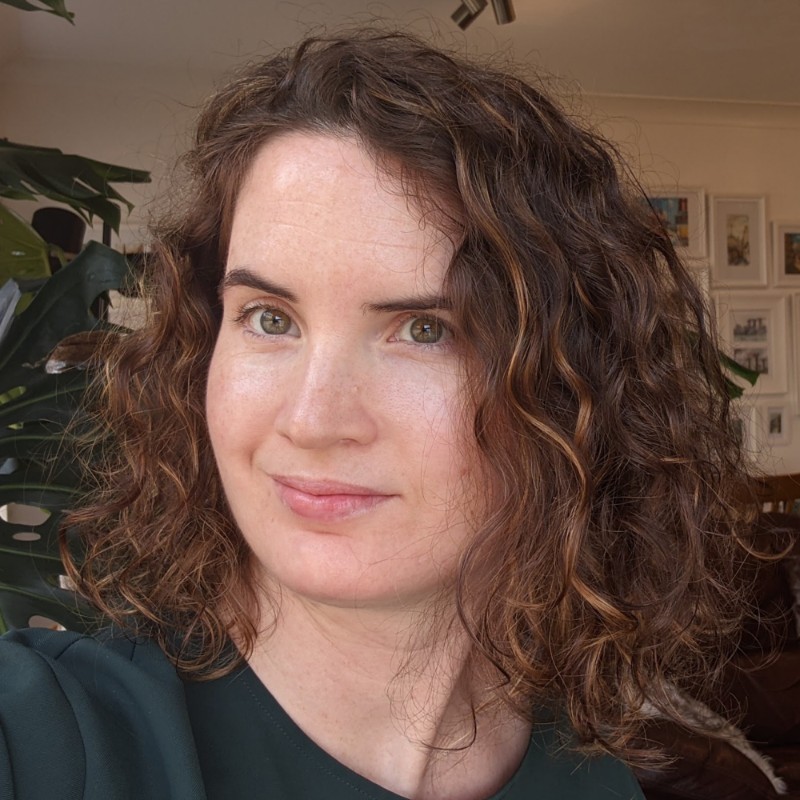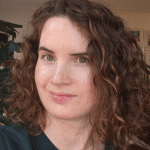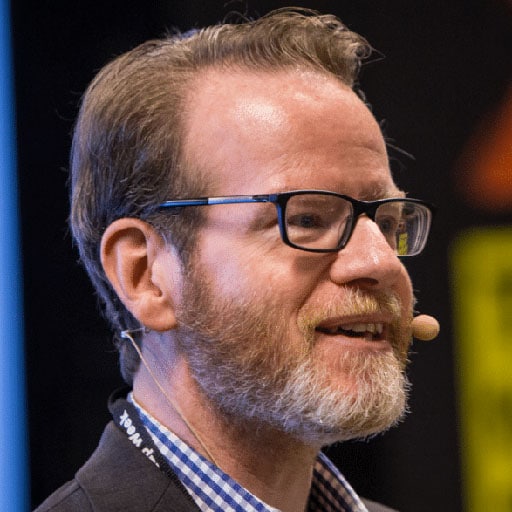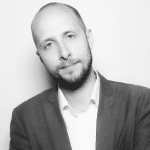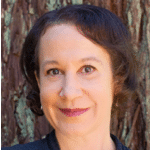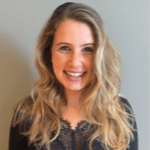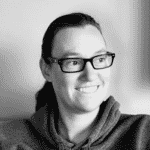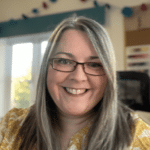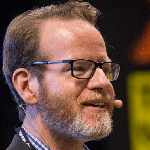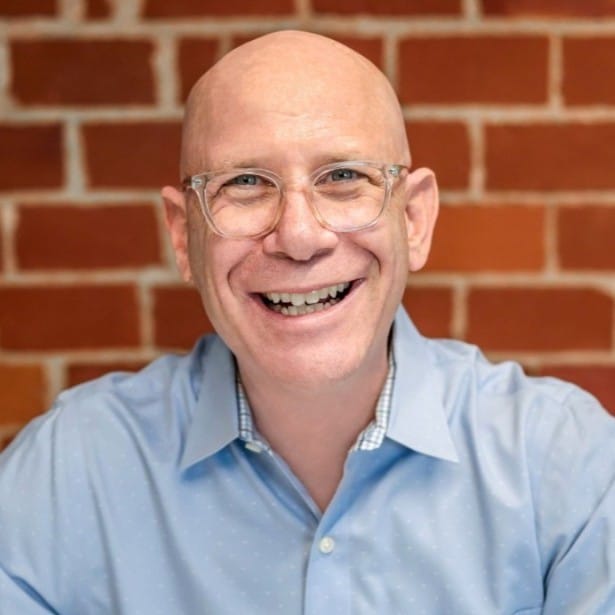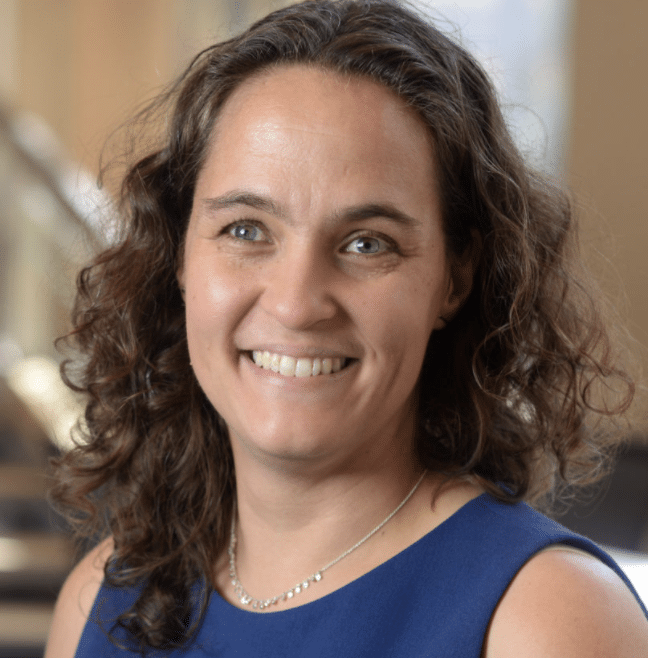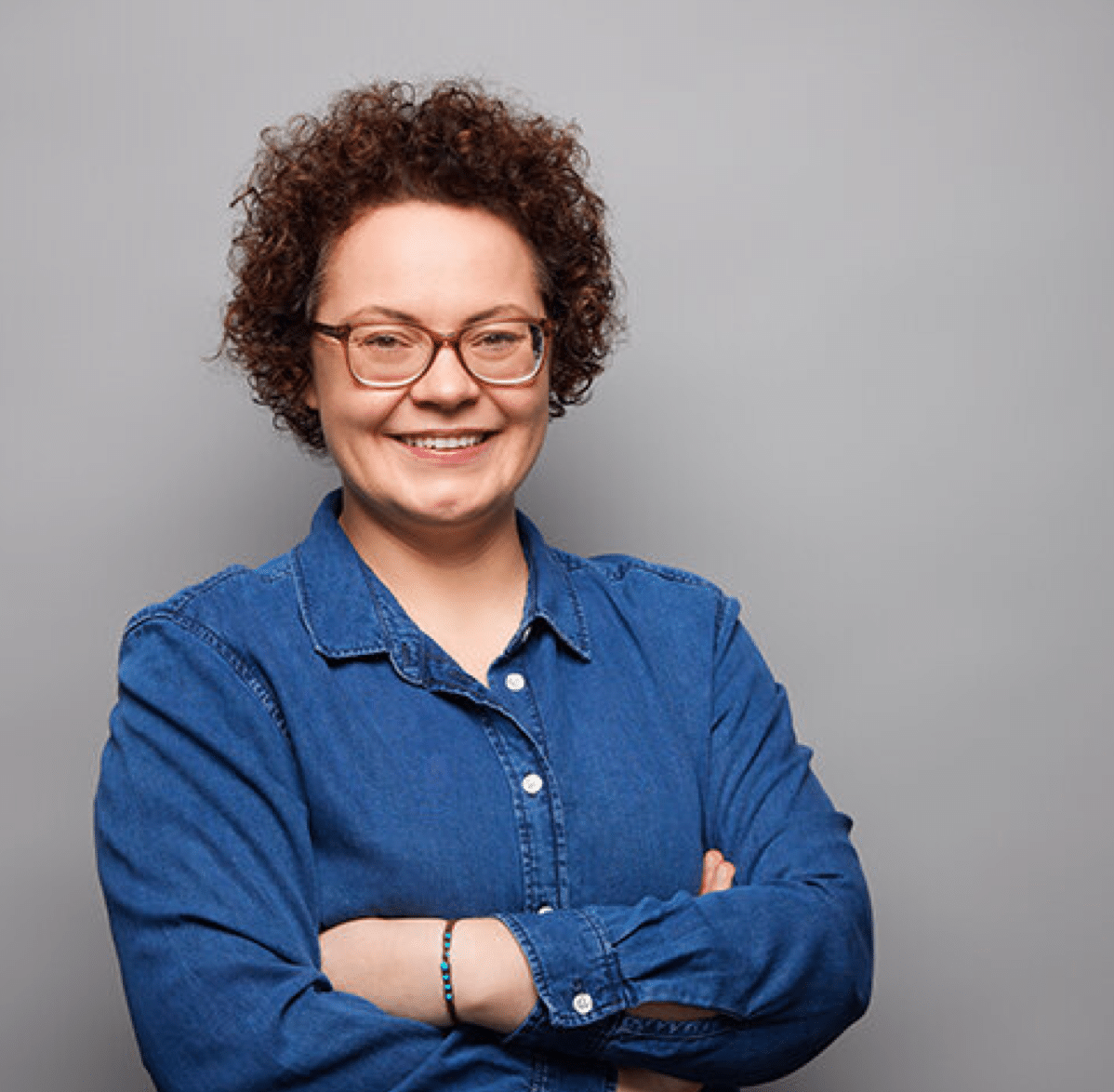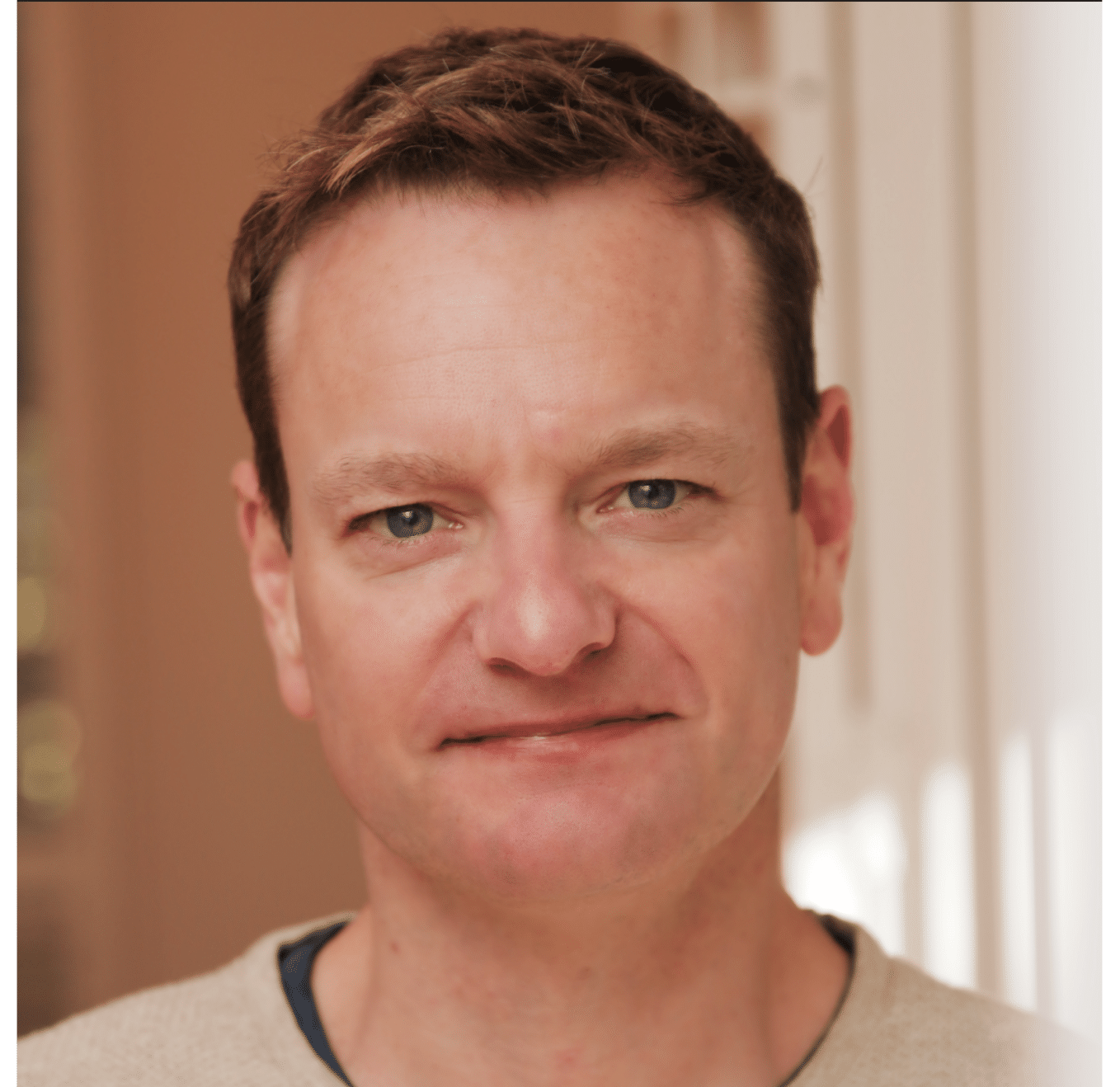Product Management Webinar: B2B Innovation Journey
How to Achieve Success using B2B Innovation Journey with Daniel Elizalde
Conquering the B2B market can be a challenge with multiple buyers and users involved, whilst trying to uncover pain points and explore solutions. As a result, B2B can be overwhelming.
Watch as Daniel Elizalde, Product Expert and Author of The B2B Innovator’s Map, and host Janna Bastow, CEO of ProdPad explore the B2B innovator journey and how it can help you to tame uncertainty and discover opportunities to develop products your customers will be eager to buy.
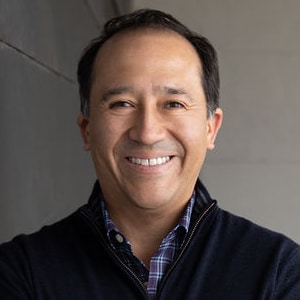
About Daniel Elizalde
Daniel Elizalde is a Product Executive turned Coach and Advisor, who helps Climate Tech product teams accelerate their product’s time to market.
With over 20 years of experience in industries ranging from Manufacturing, Aerospace, Automotive, Telecommunications, eCommerce, and Renewable Energy, he knows what it takes to build Enterprise software and IoT products.
He has also coached companies, big and small, and trained over 1,500 product leaders worldwide through my unique online courses, corporate workshops, and classes at Stanford University.
Key Takeaways
- Why new B2B products often fail to generate a profit
- How to effectively deliver value to customers
- Six stages of the B2B Innovator’s Map and how to apply them
- And so much more!
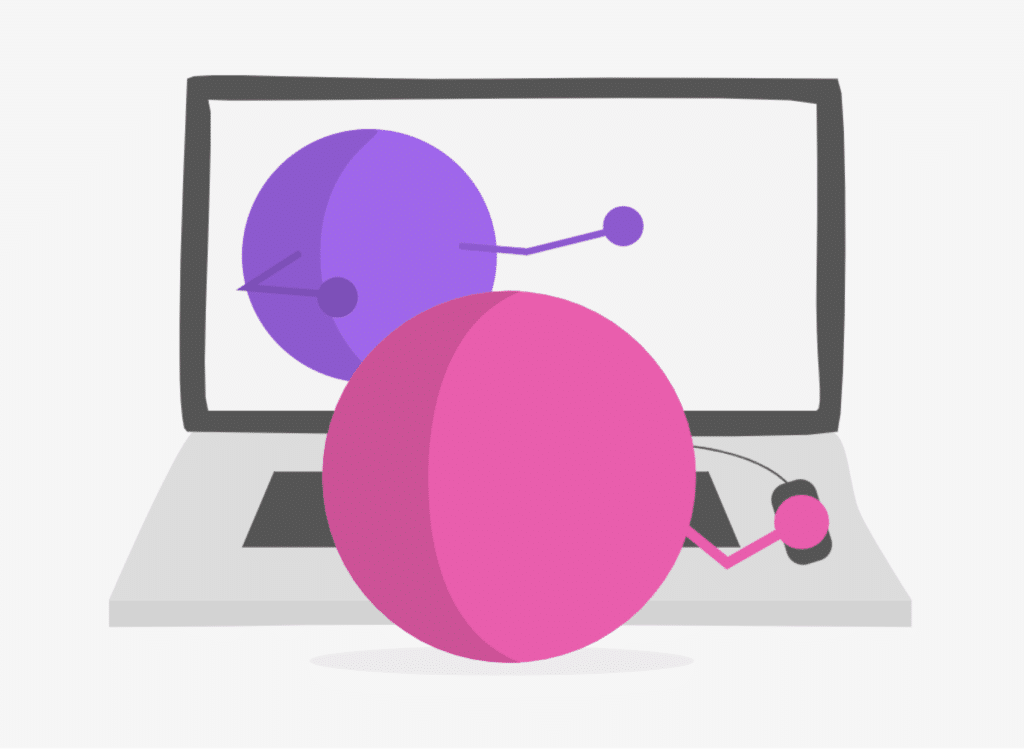
Janna Bastow: So let’s get this started. Um, my name is Janna. I’m the co-founder of Prodpad and we’re joined here with, uh, by Daniel Elizalde. Um, I’m gonna give a full introduce, introduction to him, but first I wanna tell you a little bit about the, um, webinar series that we’re here doing. So this is the product expert fireside series that we run, and it’s a series of webinars that we’ve been running for a couple years now. Um, few years now, actually, and the past ones have always been recorded. Uh, it’s a mixture of presentations and firesides. Uh, today’s gonna be a fireside, so a chat by between myself and, uh, Daniel.
Um, it’s actually gonna be about his, um, book, the, uh, the B2B Innovation Journey. Uh, and it’s always, we always bring on amazing experts from around the world, uh, and it’s always with this focus on their insights, a focus on the content on learning and sharing from the experiences that they bring to the table. So today is going to be recorded and it is gonna be shared with you all and, uh, something that you can share with other people. Um, so you also will have a chance to ask questions today as well. So you can use the chat for that, or if, uh, preferably actually use the Q and A section, that way I’ve got a much better chance of actually seeing it, but feel free to use the chat today and, um, you know, uh, talk to each other about, um, what you think about the points that myself and Daniel are making, or, uh, jump in with your own thoughts.
Now, a little bit about Prodpad before we get started. So this is originally a tool that was built by myself and my co-founder Simon Cast, who you might know. Um, we were product managers ourselves, and we needed tools to do our own jobs, nothing like this existed. We needed something to keep track of the experiment we were running to try to hit the business objectives that we were given and to solve customer problems and to keep tabs on all the ideas and feedback that made of our backlog. And so building Prodpad gave us control and organization and transparency into the process. And so it wasn’t long before we started sharing it with other product people around us. And today it’s used by thousands of teams around the world. So it’s free to try. We even have a sandbox mode where it has, uh, example product management data. So you can see how things like lean roadmaps and OKRs and experiments and ideas and customer feedback and all that stuff fits together in a product management space.
And our team is made up of product people, from founders through to many other people on the team. So, you know, start a trial today and then get in touch and let us know your feedback. We’d love to know how it’s working for you. Now on that note, uh, let’s kick off and, uh, talk a little bit more about Daniel here. [laughs] So how do I know Daniel? Um, I believe we know each other through, uh, possibly South by South Networks, um, and, uh, then became part of the Product Tank Network where he was a, an organizer, uh, both, uh, Product Tank, Austin and SF ’cause he’s, um, had a chance to move around in, uh, different areas. Uh, but I’d considered Daniel, a longtime product friend, um, somebody who I’ve been able to lean on for questions of, uh, the product nature.
He’s an expert in the area. He’s now an advisor and coach, uh, and now the author of, uh, the B2B Innovators Map. So definitely a book that I’d recommend, um, checking out. Daniel, it came out recently, is that right? Did that come-
Yeah, two months now.
Two months now. Excellent. Well, congrats on the new book.
Thank you.
Um, and you’ve got more than 20 years of experience across a range of industries. Uh, I love this, it’s manufacturing, aerospace, automotive, telecoms, eCommerce, and now things like renewable energy. And you’ve had a, a, a hand in building, uh, enterprise products as well as IOT, as well as a range of different things in between. So you’ve got this wealth of experience, which is really interesting, you’ve brought forward here. You’ve also trained thousands of product people. Um, you know, either in companies, in house or through the likes of Mind the product where, you know, that’s where we had the chance to work together. Um, uh, as well as, uh, with, uh, Stanford Uni- Stanford University, where you, uh, train students there. So really bringing a, uh, wealth of, um, expertise to this. Um, so thank you so much for taking, uh, the time to join us today. Um, everyone give Daniel a, uh, warm, welcome. Welcome Daniel.
Daniel Elizalde: [laughs]. Thank you so much, Janna. This is a, it’s a pleasure being here. Uh, you’ve been a, an inspiration in my journey for, for many, many years, and I even put that in the book.
Thank you so much. [laughs]
[laughs] It’s really glad to, I’m really glad to have this conversation, um, you know, throughout our, our journey together. Thank you for having me.
Of course, of course.
Janna Bastow: Thank you to everybody for coming
[laughs]. Now, before we get into the core topic of the day, I wanna address the fact that you’ve ma- you, you’ve mastered this, this vertical jump, like you’ve worked and taught and consulted in enterprise space, IOT, climate tech, which, um, you know, we wanna hear some more about as well, and B2B spaces, which makes you a hugely dynamic product person. You know, making a leap into a different space is often seen as desirable, but difficult. So how’s it been for you? What have you learned along the way?
Daniel Elizalde: Yeah, that’s an interesting thing. And I, um, I, I’ve been very purposeful about my career and about the jumps that I wanna, that I wanna make. Um, I always say that I am passionate about the specific industry problem that I’m trying to solve. For example, today, as a climate tech advisor, I’m passionate about addressing, uh, the climate crisis through technology, and I think product management plays a key role. And so if you backtrack, what do you need to jump into these different industries, yes, there is different domain industries to understand the problems of the stakeholders and the ecosystems and how the verticals work and all that. But I think that what has helped me is I cultivated a few tools throughout my journey.
So for example, uh, I’ve always, uh, worked in B2B. So I, I understand really well how the business to business works, uh, whether you’re at a startup or at an enterprise, if you’re selling to another company it’s B2B. So I, I understand the challenges of B2B. And then from a specific, uh, technology trans perspective, I focus a lot on IOT, internet of things, connected hardware and software. And so if you put all those things together, the leap to manufacturing, to aerospace, to climate tech is not that different because they are all B2B and they are all usually IOT, they’re connected devices, hardware, and software. So it’s just a matter of bringing in your innovation and product expertise, learning about the domain, but you have this big foundation that a- allowed you to jump across.
Janna Bastow: Perfect. So you’re finding the adjacent spaces that you can add value in.
Mm-hmm.
Daniel Elizalde: Exactly. And now, as a, as an advisor, for example, when I work with a climate tech company, yes, I know climate tech, I understand the space, the consistent, et cetera, but I also can say, hey, by the way, we tried this in manufacturing, or I work with an aerospace company and we did that and it didn’t work, or it did work. So you’re able to pull from a lot of different, similar experiences of industries that might be one step ahead, or two or three steps ahead, right, ’cause for example, energy is kind of behind a few years versus, you know, CRM software. But if I have that experience, I can say, by the way, you know, this other companies have done it like this, and this is what works. So,
Yeah.
… it’s been interesting to put all those pieces together.
Yeah.
Janna Bastow: I love that. And you know, I love what you’re doing is taking the knowledge that you have as a product person and applying it to the most critical problems that we have in the world. I mean, yeah, we could all go build CRMs and, you know, other tools for B2B, but how, what, what problems could we solve for the world if we focus on climate tech? Is that something you could speak to?
Daniel Elizalde: Yeah, of course. I mean, I’m very passionate about that. And of course, um, climate tech is a big umbrella of different types of technologies to solve the climate, climate crisis, right? So it has to do with food and with moving away from, uh, powering our cities with, uh, fossil fuels and electric vehicles and all that, right? So there’s a big umbrella, but it’s so interesting because let’s take one example, the transition away from, uh, fossil fuels. Um, it’s called the, the whole thing is called the energy transition. And there are so many companies working on that, supported by amazing software and hardware that is not only critical to do because of the crisis that we have, but there’s a tremendous opportunity for economic opportunity, And for companies to grow. I mean, it’s said the next trillion dollar company, it’s gonna be climate tech companies. You know, the richest man in the world, Elon Musk is from a climate tech company.
And what I’m seeing out there is that all these companies either have a strong technology or strong, um, uh, domain expertise, but the innovation piece is lacking. So I believe that product managers have a lot to give in this area because it can help put the pieces together and make sure that we get the right products for the right customers the first time, ’cause we don’t have a lot of time to waste. So I, I, I’m passionate about it. This is what I do, but I invite others to check it out. And if you wanna talk more about it, I’m always happy to do so.
Yeah. Absolutely.
I’m also a mentor at a couple of, um, two of the biggest climate tech accelerators in the US. And so I get to work with corporates, but also with a lot of early seed startups and it’s, it’s fascinating what’s going on. There’s so much going on and, and we need your help.
Janna Bastow: Yeah, absolutely. Absolutely. Thanks for that Daniel. And before we change the, uh, subject and talk about the book that you’ve written here, um, where can people, um, learn more about that subject? Where do you talk about the climate tech stuff
Daniel Elizalde: that you do?
It’s all on my website. So in DanielElizalde.com, I have, uh, different talks and I have articles and my podcast. And so not everything is about climate, but there’s a lot of, uh, climate there. Um, and in my book, because that’s a lot of my experience, I would say half of the examples are from climate related industries that apply that B2B. So yeah.
Yeah.
And, uh, and if you’re interested, I, I have a, I often talk about the importance of, um, PMs in climate and how you can get into climate. I’ve done several talks about that, so reach out and I’ll be happy to point you in the right direction.
Janna Bastow: Excellent. Excellent. Definitely something we wanna hear more about. Um, in the meantime, I wanna hear, uh, a little bit more about this, uh, book. So you, you titled it How to Get From Idea to the First 10 Customers. I mean, why focus on that particular problem? What was the inspiration for this book?
Daniel Elizalde: Yeah, the inspiration of the book is really my career journey. And, uh, I’ve been fortunate to be, to have the opportunity to interact with a lot of startups and large corporations to be an executive at a startups and executive at multi-billion dollar corporations, to teach at Stanford, seeing all these different perspectives. And when you talk about B2B, the reality is that everybody talks innovation, but not a lot of people understand how to do it. And when you dive into the numbers, the majority, we’re talking about 80% or more of the innovation initiatives die before they get to their first 10 customers. And so there’s a lot of, um, uh, thought about, well you need product market fit or you need to do all these things. And I think that the, all the lingo for innovation, it’s a little bit abstract. It doesn’t really tell you concretely how to do something.
And so the promise of the book is we need to be customer driven and know when is the right time to make the next level of investment. In my experience, your first 10 successful customers in a B2B setting, it’s a good indicator that you have market traction. And since most companies never get there, I thought I’m gonna break down that journey so that we can apply that the, our, our product philosophy into that innovation journey so that we can ensure that more companies get to those 10. And from there you can decide what’s the next step, right? It’s not 10 and then scale, but, uh, it’s a good indicator that you’re going on the right
Janna Bastow: Track.
Yeah, absolutely. And I love that you called that product market fit, because it’s such a nebulous term and it’s a moving target anyways, isn’t it?
[00:14:22] Daniel Elizalde: Mm-hmm. Mm-hmm. Yeah. In fact, I, uh, I, I, I ascribe in the book about how product fit is actually counterintuitive because as an innovator, somebody driving the innovation process at a company, you need to have people aligned and you ask 10 people, what is product market fit, they all give you different answers. So you can’t have alignment if you can’t have the same language. And so, uh, product market fit creates that abstraction and that net nebulosity, I think, right? So 10 successful customers is very tangible, is very concrete. You know you have three or four or five and you can very be very clear about your goals. Um, and I took an abstract of the book and I created an article that’s on my website, uh, on why we need to move away from product market fit. And I posted on LinkedIn expecting there’s gonna be this big backlash of like, you know, the agile and the lean purists,
[laughs]
… and it wasn’t. Everybody was like, yeah, we’ve been thinking about this. We hate it. You’re right. Glad you said it. And I was like, wait, where’s the controversy, where’s the discussion?
[laughs]
So I think people are, especially in the B2B world, are ready to move on.
Janna Bastow: Yeah, absolutely. Absolutely. And so there’s some, uh, uh, there’s some interesting terms that you use in there. Like you use the, you talked about the innovator’s map. I mean, who’s the innovator in this, in this case?
Daniel Elizalde: Yeah, that’s a great question. So in my book, I described the innovator as the person responsible for delivering new products to market. And so you are, if you are part of a team delivering new products to market, you are the innovator. And because of my product background, initially, I started writing for, uh, product managers. And so I had, it was a product leadership book. But then as I, you know, kind of ate my own dog food, right, and interviewed a lot of people and understand their pains, uh, it turns out that the more I was talking to companies launching new products, smaller companies, they don’t even have the function of product. So I was talking to CEO, to founders, to CTOs, and then in large corporations, in corporate innovation teams, I was talking to the VP of innovation or some CTO that got moved in or some director of engineering.
And so all of a sudden everybody could, um, come together under the term innovator. And so I thought if I really wanna get this message to whoever is driving new products to market, I’m gonna, I’m gonna make it a little bit more abstract and make it an innovator. And so believe it or not, less than half of the people that I talked to that are launching new products are, have the titled product manager, right?
Yeah.
They just say product management is a tool that I need in my journey, but I’m not a product manager, right?
Yeah.
So, there’s good and bad in those.
Yeah. And that-
… [inaudible 00:16:58] more product
Janna Bastow: managers.
And that actually checks with what I see here at Prodpad as well. I mean, a lot of people who end up using Prodpad come to us because they’re, they’re, you know, we can see the, the search intent, they’re looking for tools that help them build products. But when you actually look at their title, when you talk to them, they’re not product managers per se. Um, maybe they should have that title, um, or maybe they’re the founder and they’re looking to maybe get that, get to that point one day, or, you know, maybe they’re part of a large corporate and they’ve got some, uh, mangled title that’s been bashed together by a bunch of different org charts. Uh, I’ve seen all sorts of different things. But innovator is a nice tidy way of, uh, wrapping it up, isn’t it?
[00:17:35] Daniel Elizalde: Yeah, ’cause it’s, it’s ultimately what you are doing. Like I was, I was the head of the innovation department for, uh, Erickson, uh, in Silicon Valley for IOT and 5G. My title was Vice President, Head of IOT for North America.
Hmm.
Right? So it, it seems to resonate well, and everybody likes to say I’m part of innovation and at least to start putting some definitions, real definitions, right?
Yeah,
Janna Bastow: yeah, absolutely. And so, you know, you, you talk about these stages of the innovation, uh, the innovators map. What are the, the core stages that we should consider going through?
Daniel Elizalde: Yes. Thank you for that. So I, I break down the innovation journey from idea to your first 10 customers into six stages. Um, the first one is strategic alignment, then market discovery, user discovery, solution planning, prototyping, and early adopter. And so the way that I laid out this map is that, um, it’s not linear, but it’s iterative. So the idea is that there are clear criteria that you have to meet to go from, let’s say, strategic alignment to market discovery, from there to user discovery. But then if you don’t meet that criteria, you can either iterate on that stage until you get it, or you can go back if you didn’t find enough user evidence, it’s okay to go back to market discovery and iterate there, right? And so that’s why it’s really a back and forth. And I have a lot of examples in the book on how it works. Um, so it’s not a, it’s not a waterfall, you start here and you end, end there.
Yeah.
And the other thing that I, that I focused on specifically is, like the book says it’s a B2B journey, and so every single stage has to do with how is this different in B2B versus B2C. And that’s why even in the early, in the later stages, for example, prototyping is how do you prototype in, in B2B and especially my field of heavy industry, and then the last stage is early adopters, meaning how do you deal with early adopters? How do you run pilots? How do you get out out of pilot purgatory, all that stuff that all B2B people love to hate.
How do you get outta
Janna Bastow: pilot purgatory? I like that. [laughs] What is pilot purgatory?
[00:19:46] Daniel Elizalde: Um, pilot purgatory… So just to take a step back, um, and in the book, I describe why corporations are very fond of pilots. It makes a lot of sense, right? You’re trying to bring in a product and a technology that it’s not proven in the market. And so you are going to have to test it out. You can’t roll it out to your whole corporation immediately.
Hmm.
And so what happens is that a lot of pilots are either ill conceived or ill executed, and so you never get past that pilot and you never get that successful customer. So when I say that a lot of companies never reach 10 successful customers, it’s really, they get either they don’t get the customers or when they do, they get stuck in forever pilots or pilots that die because they could have been avoided, and so they never get passed to the, to the growth stage. So it’s this idea that, you know, you engage with a company and they are gonna continue to asking for more things, and then eventually they’re gonna say, you know, this was cute, but we’re gonna go and, you know, buy Microsoft or buy SAP or whatever,
Janna Bastow: you know?
Right. Yeah. And so should pilot, uh, projects be something that you charge for as a, as a, as a business providing them? And how do you go about, um, figuring out a price for that? How do you go about asking for the money for that when you know it’s a product that is less than 10 customers, for example?
Daniel Elizalde: Mm-hmm. Yeah. And that’s an excellent question. And, and it all goes down to, um, the way I, I perceive the, the journey is by following these six stages, you are very early on, from stage two market discovery, already engaging with specific companies, trying to understand their pains and you’re carrying them along, so you’re building this relationships, and when you get to the prototyping stage, you’re actually building some software and hardware and testing it out. And if you have those good relationships and you build something that really solves the problem that you’ve been hearing from that customer and a few others, then the customer will wanna say, you know what, I wanna try your product and I wanna buy it.
Hmm.
It’s important to identify that you’re talking to an early adopter as opposed to a pragmatist that wants a full solution. So, once you identify that person and they are interested, it is important to get payment or payments of sorts because the whole journey from, from the stage one to stage six is, uh, an experimentation to see if your product has validity in the market. If you have the desirability, feasability and viability. So if you’re not able to get any money for your pilot, that really puts a dent on desirability and viability, right? If they not willing to pay for it, is the pain big enough? Is your solution the right one, right? And the right early adopter will be willing to pay.
Now it’s not gonna be paid full blown, it’s gonna be paid maybe less, maybe it’s half payment in money, half payment in marketing collateral. You have to negotiate that, right? Remember these stages are still for learning, so your company cannot see the payment of pilots as incoming revenue for the quarterly report. And so it’s about testing the willingness to pay by actually asking them for money, right?
Yeah.
Janna Bastow: Yeah. It’s good to hear those different levers for, uh, negotiation as well, like marketing collateral and, uh, uh, case studies and things like that. You know, all different ways that you can sweeten the deal for them, but also sweeten the deal for yourself. Um, but I think you’re right. I mean, in my experience, if you’re not able to get them to agree, to put something down for the work that you’re putting in, then the chances that they’re gonna pay for it down the line, you know, chances are, they, weren’t a good customer in the first place. They weren’t good for it in the first place.
Daniel Elizalde: Exactly. And, and it is possible that even if they pay, um, the pilot dies, but that’s why it’s important to, to take the early adopter stage as a learning. So you, you’re gonna, you’re gonna learn as much as you can from this customer. Maybe you’re able to grow it, but maybe not, but the reality is that you’re after 10 successful customers. And the reason why I say 10 is because, by the time you have 10 customers, and in B2B, a customer is a company, right? You’re selling to Walmart, you’re selling to Target, right, and they might have hundreds of users. So for every customer, once you get to 10, um, it is very likely that you’ve seen everything that has gone wrong with the sales process, with the installation process, with the operation process, with the maintenance process, everything, right?
And so you’re ready to say, you know what, this is a good time for us to invest more, ’cause there’s more potential. Maybe one or two or three of this initial pilot customers won’t continue to grow with us, but it doesn’t matter. We got the learnings and we feel comfortable that the market would want this product if we continue to invest. So that’s the key, the mindset shift, you know? And the moment that your executive team sees some money coming from somebody, and especially if it’s a big brand, the innovator has to be very protective of the goals of the innovation journey, because otherwise it’s very easy to say, all about the revenue and, and then it goes sideway and you end up with a bad pilot.
Yeah.
And I describe all those examples in the book.
Yeah.
This
Janna Bastow: is what I love about this process. It’s really tight process that gets you to not just 10 customers like any 10 paying customers, but 10 right customers. And along the way, you’re inevitably gonna end up with, you know, maybe there’s another 10 who you ended up turning down because you did the research work with them, they didn’t make it through the, the discovery processes. They saw the prototype and went, oh, this isn’t for me. And a lot of teams out there might be drawn to say, you know what, if we’re just trying to get 10 customers, like any 10 customers, we’ll just try to build for that, that thing. And they’ll get torn away from the path that they’re on rather than trying to build for the right 10 customers.
Mm-hmm.
And what often happens is if you’re built for the wrong customer, you’ll never find another one like that, right? You, I’ve seen so many teams, uh, build something that’s so unique to one customer that no one ever is gonna build it again, um, no one ever is gonna buy it again. And so you’ve almost become like an agency for this, this one, um, this one customer. So this process, because it’s got these stages, uh, in front of it help make sure that you’re actually building something that’s of value, um, for the business.
Daniel Elizalde: Exactly. I think you’re completely right. And, and I wanna emphasize, like, I think it’s a, it’s an excellent point. Um, the way I address that in the book, um, in stage two, which is market discovery, it’s all about understanding which target market you are going to go after and understanding who are the champions that you’re gonna go after and what are their pains. And so when I say 10 first customers, it’s 10 customers of the same target market. Sometimes I talk to some companies and they say, yeah, we have 10 customers. One is in automotive, one is in healthcare, one is in aviation. And so what happens is that you don’t get a cohesiveness of problem. If you select 10 companies of the same target market, which by the way, I have a clear definition in the book, what target market means includes, um, industry, company size, geography, um, use case.
And so if they’re all about the same, then their problems are gonna be similar, and then you can advance that. Now, if you select your target market and you continue through the different stages, for example, user discovery, you might find out that there is no common problem for that particular target market. And that’s fine. You go back and either select the different target market or keep the discovery part, right? So that’s why, by the time you are advanced these stages, you should have a good understanding of who you’re targeting, what their pains are from a, from a, um, economic buyer, from their champion, from their users, and then what potential solution and then how do you test that solution?
Yeah, absolutely.
[00:27:39] Janna Bastow: And so it, you know, I notice that you, you talk about discovery, but not just discovery, you break it down into two different stages. I mean, that takes up, uh, you know, two after your six major stages, market discovery and user discovery. I mean, why those two different stages and where does, uh, where does that fit in and where does customer discovery fit in there? Is that the same as user discovery?
Daniel Elizalde: Yeah, that’s a great question. And the way I, um, I made this distinction is, is because of the, one of the characteristics of B2B, which is you have a buyer and you have users, and they might not be the same. And so I treat it a little bit different. What I, what I do is in the market discovery, I focus on techniques to help you figure out what types of companies you go after, that’s the first phase. But then within market discovery, now that you say, I am gonna go after retail companies that are over a billion dollars in the US. Okay. Who within that company has the pain that you have agreed to solve in the strategic alignment stage, which is stage one? And so let’s say that that is the director of operations. Well, that becomes your champion. And then the, I use the term champion because in the innovation journey, you are not looking for a buyer, you’re looking for a champion, that’s gonna champion your solution, give you feedback, help you get into the organization, put their name on the line so that you can do a pilot.
So in the market discovery stage, you need to understand the desired outcome that your champion needs to do. So for example, let’s say that you’re selling a CRM and your champion is the VP of sales, and they have been tasked with increasing output by 30%. That is what they wanna do. And so that’s your champion. And then you’re gonna figure out how you can help them. Now, in B2B, the champion might not be the user of your actual product. So that’s why I broke down into a different stage. So in the user discovery stage, you’re gonna figure out who are all the people involved in delivering the activities, that together, add up to the outcome of the champion.
So again, in the CRM example, you have account executives and you have admins and you have IT and you have, uh, field people, and all of those are gonna enter their deals, and all of those are gonna do things. And the value of all of that needs to add up to the VP of sales reducing or increasing output by 30%, right? And so that’s why, if you don’t understand the market and the champions business outcome, then it doesn’t matter, right? And I actually advocate something that is a little bit controversial here. When I, when you go into prototyping an early adopter, I say, focus on just the users that are gonna help you demonstrate the value to the champion.
Hmm.
There’s a lot of complaints in B2B that, oh, the user experience for this group is terrible. It’s like, yeah, maybe initially it needs to be, or maybe it’s completely ignored because you’re focusing on this two or three users whose outcome is gonna be most valuable for you to demonstrate your value proposition.
So you’re just
Janna Bastow: focusing on the early adopter users within the subset of the customer group itself?
Daniel Elizalde: Exactly. Because if you can’t demonstrate that by having your software, or software hardware combination deliver extra value, you know, with a few users, it doesn’t matter that you have extra users, right? Um, I, I, in the book, I actually have this clear example where let’s say that you’re building, um, HR software for recruitment. And the challenge that the champion has is that they need more visibility into, um, metrics for hiring. And so, um, you need to get resumes into the system because otherwise you don’t have anything to work with, but the user experience and the feature set for the applicant are less important because as long as you get the data in, right, what you need really to demonstrate is how your AI or whatever it is that you’re using can provide those insights for the problem they’re trying to solve. If you have the best interface and features for the applicant, but that doesn’t really result in impacting the outcome of the champion, it doesn’t matter, right?
Yeah.
Janna Bastow: Yeah. You’ve gotta solve one particular problem qell first and then go from there as well. I mean, I’ve heard the same thing applied to marketplaces as well. Like how do you build a two sided marketplace? Well, it’s really difficult if you’re waiting for one side or the other to get started. And I remember back in the days of, um, uh, what you were just saying there, another example is, uh, back in the days of, um, uh, before Uber, there was another, uh, London based, uh, cab hailing app called Halo, and they launched. And the day that they launched out to the public, there were all these black cabs on there. All the London taxis were already using this thing.
And their secret was, is that they built an app that was already useful for the, the, the cab drivers. It was something that would tell them where, you know, if, uh, the arena had just led out and there’s a whole bunch of people waiting for rides, or if there’s a lot of traffic and it gave them a way to talk to each other. So they built something that was just a useful social network for cab drivers, and then added on the ability to pick up rides, and all of a sudden it was this big success. And then Uber came, which was a different animal, but, you know, obviously you can see how that was written.
Daniel Elizalde: Yeah. Yeah. I, I completely understand. And so that’s why in the, in the book, I break the different stages. And so in the user discovery stage, I give a lot of specific techniques on how do you find all the different users and then how you do evaluate their pains. Because one of the interesting things about B2B is that the, even the users are gonna be across the enterprise customer life cycle. That includes the sales process, the installation, the, uh, deployment, the uh, maintenance, operation, decommissioning. And so there are players around this whole thing, and you have to figure out which are the right users that you need to focus on. And, and in the book, I, I make some very concrete examples of my experience where I left some users out that actually derailed the whole product, because I never thought about them.
Yeah, yeah.
But the, the discovery, the user discovery is really who are all the potential users of this solution, and then what are their specific pains? And can you identify a set of pains that are big enough that if you solve those, everything adds up to solve the problem of your champion, and then you have an opportunity to move forward.
Janna Bastow: Yeah, absolutely. And I love that the book includes all these specific examples. It also includes example personas and how to lay them out. Like why, and how do you use personas?
Daniel Elizalde: Yes, I’m a big fan of, of personas. So a persona is just a representation of your ideal user. And, uh, one of the things that I made a big emphasis on the book is that, a lot of times we talk about innovation as a way to understand the market and the customers, but the reality is that as an innovator, we have to spend half of our time externally and half of our time internally, because we have to bring the rest of the organization along, we have to make sure that they understand the process, what are we doing, uh, what is next, why we need more money. And so it’s all about communication. And I found that personas are a great communication tool to get alignment with everybody to say, this is a problem that we are after, these are the different types of people that would benefit for the product, and, uh…
And so it’s a way to kind of humanize the different users, put a face to them and have concrete, uh, problems that they’re trying to solve. In the book I give a little form that’s been really useful for me of like, these are the things that a persona should have. And when I talk to a lot of teams in my advisory practice, they can’t feel even that small form, like what is the main three pains of this particular user? And so sometimes these tools help you communicate, but that also self serve you as a way to say, do we have this information? No, we need more discovery, right?
Yeah.
And so it’s a lot easier to use this kind of tools this way.
Janna Bastow: Yeah, absolutely. And speaking of, uh, tools, you, you talk about an experiment roadmap in the book, like when does that come in and what does that mean?
Daniel Elizalde: Yeah. Uh, so in the prototyping stage, which is stage five, um, uh, let, lemme take a step back. The first three stages are about understanding the pains of your customers, and then the second three stages are about understanding a potential solution that you can deliver to solve that problem. So you have to know the problem and then you have to figure out what solution. So when you do solution planning, you’re saying, which is sta- stage four, you’re gathering all these insights from what you have, know from the market and the users and you think, well, if we build this type of product, then we could have a chance. And so, but you thinking of a product doesn’t mean that it’s gonna be successful. So therefore in stage five, prototyping, it’s all about how do you test assumptions to make sure that what you are proposing as a solution is an actual solution for the problem, okay?
And so there’s, there’s, uh, I advocate for a lot of different types of prototyping and always testing around desirability, whether you market once your product, feasibility, whether you can actually build it, and viability, whether it can be financially, um, uh, profitable.
Mm-hmm.
Um, and I actually have a lot of more sub-categories there that are very particular. Um, but anyway, so the, the point here is that you have to have a list of assumptions and you have to have a way of saying, we’re gonna test this and we’re gonna test this and we’re gonna test this. So that simple list of this is the assumptions that we have, and this is how we’re gonna test it is how, what I call the, uh, experimentation roadmap. Because at this point you are not fully building, you are experimenting. And again, the reason I didn’t call it a roadmap of experiments or something, is because of communication.
People assume that when something is in the roadmap, it’s a done deal and it’s gonna be built, for better or worse. And so throughout the book, I, I give a lot of like pro tip, avoid this lingo, avoid saying this, because you are always signaling that you are in innovation mode. So the experiment roadmap means this is what we are gonna spend the next three months on. This is why I need money on people, and these are the assumptions that are gonna help us figure out whether we have a chance to something here.
Yeah.
Does it mean this is gonna become a product? Doesn’t, no, right? So it’s a way to, to prime the internal organization that you’re not, you’re not building something yet, you’re not ready for that.
Janna Bastow: Yeah. And it helps the team, uh, keep that experimentation mindset. Now, how far out, I mean, do teams tend to plan these things? I mean, they, they almost certainly come up with a whole bunch of different things that they could try, ways that they could solve this problem, and there’s almost way too much to, to do. Um, how do they prioritize that? How do they plan out what they’re gonna do and what they don’t do?
Daniel Elizalde: Yeah. That’s a great question. And here, of course, as with everything else, right, we’re standing on shoulders of giants. So here, I, I really rely on a, on a technique that I learned from David Bland and his book, um, testing the, How to Test Business Ideas. And I, I put that item in the book, which is really, he recommends prioritizing things by, um, how much impact they’re gonna have and how much customer evidence you need. And so in the book, I have different categories on how to do that for desirability, feasibility and viability. And, uh, and then you have to just make them as short as possible. But the way that I focus the prioritization is, what has the most impact and, um, uh, what we don’t have customer evidence, and always start with the desirability. I work with a lot of teams that start with feasibility. Can we build it? It doesn’t matter if you can build it if nobody wants it. So start with your experiments for desirability. And then if you that as successful, then feasibility and viability become, uh, important, otherwise they don’t matter.
Janna Bastow: Yeah, absolutely. And I also see so many teams who, uh, forget about, uh, viability as in, you know, is it actually something that will support the business? Like they’ll build something because, yeah, some people want it, it’s also a problem, um, it’s something you can do. But do enough people actually have that problem that you could actually build a business off the back of it, um, that you could actually justify the amount of effort that’ll go into supporting this thing long term. You know, I remember a new feature is for life, not for, you know, the new release. I mean, it’s not for life, life, you can always roll it back, but you don’t wanna waste all that time doing the wrong thing. So yeah, these, these types of questions, that test are hugely important.
Daniel Elizalde: Yeah, exactly. And one point that I, that I’ll make is that, um, in the market discovery stage, which is stage number two, I do talk about in the book, how to size your market, whether to know that market has opportunity for viability, because you have to do that early. There’s not a big enough market for sustaining a business, then go back, right?
[laughs]
But then when you’re prototyping and you are determining viability, I have other types of viability that I explain in the book. And one of them that is very counterintuitive is what I call internal viability, meaning,
What’s that?
… the fact that you have discovered a problem and there’s a potential solution, um, the fact that you found something that can become a product doesn’t mean automatically that your company will be willing to get behind it.
Mm-hmm.
And that’s why it’s so important to bring them along all the time, because at this point they’ve invested in the exploration, but then when you say, you know what, we can actually have a business here, I’ve had many innovations die at that point because the executive team might say, we are, we didn’t expect to go into that vertical, or we are not gonna go into that geography, or it’s gonna cannibalize this other initiative that we have and they decide to kill it.
Yeah.
So it’s very important to keep that momentum and say, your executive team has to get the buy in at every single step, otherwise you will never see the light of day.
Janna Bastow: Yeah, absolutely. And this is where strategic alignment can help is, you know, setting those guardrails, you know, saying, well, this is the type of areas that we’re looking at, and this is, you know, the type of moral boundaries that we’re looking for, and this is the type of, um, tech that we’re willing to build with, you know, so that you don’t go off and come up with ideas that could be great, you could make money, but are completely off center, right?
Daniel Elizalde: Exactly.
[laughs]
Exactly. And it’s funny to mention that because strategic alignment, which you haven’t talked enough is, is the first stage. And I struggle on whether to include this as the first stage, because I thought, you know, anybody doing this, it’s sort of realigned. They already want, you know? But it turns out that it’s where most companies get stuck. They have different ideas of what they want, what problems they’re trying to chase, why they’re chasing them. And so with that alignment, without that alignment, you get nowhere. I’ve actually, um, collaborated with some companies where their whole alignment is just innovate.
Right.
And so you have this team doing things and then showing them to the leadership team is like, is this what you wanted? No. Okay. And it’s like, sometimes I talk about some CEOs, about it’s like, well, we just need, you know, to grow our money this percent, so we’re gonna do innovation. It’s like, no, I mean, if that’s your goal, put a food truck or put it in the bank or, you know, put it in stock or some… There’s a lot easier, less risky things than starting an innovation process and practice. So you have to have a clear understanding on why you wanna do it, and also as the innovator, explain clearly to the leadership team, this is what the innovation journey looks like. And so if you’re going in, I wanna ask for your support throughout this, and we might not even get it here, right?
Hmm.
I think a lot of, of, um, especially, but at the leadership level, uh, that are not familiar with innovation miss that part, And I think us as product leaders and innovators sometimes don’t push back hard enough to say, hey, we need that clarity.
Janna Bastow: Yeah, absolutely. And so in the book you talk about how executive teams speak a different language from product and innovation teams. Like in which way, in what ways do you see that? How can product people overcome challenges around that?
Daniel Elizalde: Yeah, that’s a very good point. And it’s, it’s, it’s hard because depending on the leader that is, um, driving the initiative, um, they speak different languages, right? So for example, finance people, they all speak in terms of returns. And, um, uh, if, if the innovation falls under some engineering team, it’s all about the tech that gets created. Um, sometimes CEOs are more about just new markets and closing deals. And so none of that is around product. And so it’s our job to make sure that we explain the process and then talk to our leaders in the way that it’s gonna make the most sense out of it.
If you’re talking to a financial person and they’re looking for, why should they give you this money so that you can get some return in the future, map that out and say, we’re gonna get that return if we go through this journey, invest this way, and at this point we get an actual product and we start growing in. And at that point we do this and do that, right? And so making sure that people understand the innovation journey, and then you explain it to them in the terms of what they care about, that’s, what’s gonna give you the support. And it’s hard, it’s super hard.
Yeah.
Janna Bastow: I mean, half the role of a product person, an innovator, if you like, is communication, and it’s not just communicating outwards to your peers, but also communicating upwards.
Daniel Elizalde: Mm-hmm. A lot of it I’ve seen is communicating upwards, especially if you are at an executive level of innovation, where usually the people above you, the C level folks really are not really caring that much of what comes out, right? And so it’s, they put it on to you, it’s like you figure it out. You just need to add to our Q3 line item here.
Mm-hmm.
You go
Janna Bastow: here, right?
Just make sure it’s going up into the right. [
Daniel Elizalde: laughs]
It’s not like we do that. And so that doesn’t work, right? Now, what doesn’t work also is trying to bring them along and say, let me show you exactly how we’re gonna do this discovery to show this persona, and maybe, but like, we need to find that balance, um, ultimately want their support, uh, for them to keep us giving us, uh, support and money and people to drive the innovation, and we have to set the expectations because innovation is uncertain. Most likely than not, it’s gonna fail. That’s just how it is, right?
Yeah.
And so I, I’ve talked to some folks that their goal of their innovation, um, initiative is to be a unicorn factory. You know? I mean, no, that doesn’t work like that.
Right. Yeah.
So those expectations, ’cause otherwise we’re setting ourselves for failure.
Janna Bastow: Yeah, absolutely. Absolutely. I mean, most experiments are going to fail, you just don’t know which ones, and some are going to succeed if you do enough of them and you have the right rigor behind them, you will eventually land on something. You just don’t know what to level. Um,
Exactly.
… and it takes the team, uh, the exec team’s, uh, willingness to invest in it to make that stuff happen.
Yep.
Daniel Elizalde: And in the book, I also talk about, um, expectations of time, because I think that, um, a lot of what we hear about B2C product management has muddied the waters a little bit of like, you have to run a hundred experiments a day and you sit your team at a Starbucks and ask people. It’s like, I am building a wind turbine offshore, the, you know, the coast of Ireland. Like that, getting the people that you need to talk to, getting the pilot to prove something, or, you know, getting a manufacturing facility to stop a line for half a day for you to run a pilot or, and it’s like very different, right? So getting the right expectation that this is gonna take more time and then you need their executive support to say, hey, I need you to connect me with the CEO of that company so that they can tell their VPs to open doors for me. I mean, it’s a very collaborative thing and it’s gonna take time, right?
Yeah.
But that’s why it’s important for as you as an innovator explain the process, right?
Janna Bastow: Yeah. Set the expectations correctly.
Absolutely. I mean, you know, that’s one of the things I always point out to people is that, you know, while it might be harder to build in hardware or in regulated, uh, spaces or, you know, spaces where you can’t just turn around and push new codes the next hour, which if, you know, you see a hundred users bulk at what your change is, um,
Right.
… the difference is that you’ve also got a more defensible space. I mean, provided that you are working with the same sort of tech that your competitors are, you can only move as fast as the tech allows you to, right? And so if you can find ways to iterate as quickly as possible within hardware, you can do some amazing things. And so, um, you know, no one’s gonna come in and, uh, rapidly copy what you just built, whereas in the software world, you know what, it’s, people are building it, no code in no, in no time at all. Whereas in hardware world, you know, uh, the things that you’re learning are defensible. You’re building incredible pieces of tech that, uh, can solve great problems. Um, and so that’s why it does take longer, but also can create a more of a moat between you and, um, the rest of the world, and therefore it becomes higher value.
Daniel Elizalde: Exactly. I completely agree. And, and a lot of the work that I do is, is IOT product strategy, which is that link between hardware and software, and that, you know, if you get it right, yes, you can build those, those modes, but it, um, from an innovation perspective, it it’s, I think the important thing is that, you know, what it takes, it’s gonna take some time.
Takes time.
Janna Bastow: Yeah. Yeah. And you’ve gotta understand that it’s not the same as B2C. It’s not the same as simple software. Yeah.
Yeah. Exactly.
Now you also, in the book, you recommend staying away from terms like MVP and version one and alpha, and I’m very sorry too Minaj, who just mentioned MVP in the chats there. Um, but what do you, why? What are good alternatives to terms like these? [laughs]
Daniel Elizalde: Yes. Uh, the reason I say that is because it’s all about clarity of communication. Um, MVP is one of those terms that nobody knows what it really means. And that’s the, all these things, well, it’s a one feature MVP. It’s a no, it’s a most lovable product. It’s like, it’s just confusion. And there is so much uncertainty on B2B innovation already that let’s, let’s not use that, right? Um, I like the term prototype, because a prototype can continue to advance from a, a very basic, just like back of the napkin prototype to a fully, uh, functional, I call it a working prototype. A working prototype is something that a customer can buy and can use in production, but it’s still a prototype, right, because it’s still within your first 10.
Yeah.
And so when you use terms like alpha and beta, those really give the impression that you are already in production, and this is a pre-release of something that will happen. A prototype, if you keep calling it a prototype, even if it’s a working prototype, it’s easier to kill if it doesn’t work, right? So it’s all about setting the right expectations to the rest of the organization, right? Um, people are very used to the development flow of alpha, beta, those kind of things from a waterfall perspective. Um, but again, they signify that alpha is there, we are here. We know what we’re doing, then beta, and then we are gonna launch. You’re working prototypes, even after five customers may never see the light of day, right? So that’s why it’s all about language. And I’m very open to other suggestions of what, you know, people in the audience here, what have you used to remove ambiguity? I’d love to hear that.
Yeah. Uh,
Janna Bastow: everyone get your, um, your, your suggestions in the chat here. And in the meantime, we do have a question from, uh, uh, somebody in the audience, an anonymous attendee here. What are your suggestions to keep the company innovative when customers are not willing to share how they use the data you serve them? Uh, for example, B2B data companies.
Daniel Elizalde: Hmm. That’s really interesting. The… Let me think for a second. So the way I think about innovation and understanding the customers, it’s about understanding the, the problem that they’re having and the impact that that is going to have. Um, I guess I’m trying to understand if the customers are not trying, and not able to share the data that they’re getting from your product, is that, is that what you’re saying, or, I guess I’m missing the, the second part of like,
Yeah, I
Janna Bastow: guess it’s hard to, to understand. Um, I’m not sure if this, uh, person is, uh, able to add any clarification in, uh, as a follow up question. Um,
Yeah.
… but yeah, I mean, I guess it can be difficult if you’re not able to see what your customers are up to, or they’re not willing to give you feedback, for example.
Yeah.
Let’s, let’s take that as a, in the spirit of
Daniel Elizalde: that.
Yeah. And that’s a really good point. And, um, in the early adopter stage, I actually have a, a whole section on how to increase the chances of success of your pilots. And there’s a couple things that I emphasize a lot. And one of them is instrument your software from the very, very beginning. So meaning add pieces of coding in your software so that you can see what your customers are doing, because they might not be able to talk to you, or willing to talk to you. So if you have a way to get that information in the background… Now, they have to be aware that you’re doing that, you’re not spying on them, but that way you can do that. Because I think in B2B is very important to think about how every second that a customer spends with you, it’s some time that they’re not spending, uh, tending to their business.
So it’s, it’s a little bit difficult to separate them from there. So we have to make it as seamless as possible to get that. And also when you’re working with the early adopter, as part of your pilot, you can specify that you need access to certain people, that you need feedback every so often, and, and did you, you bake it in that agreement that that’s how you’re gonna work. Not always works, but try for the best, right? So I think it’s on us to, to create that onus of how are we gonna get the right information as we go forward, right? So those are two techniques that I’ve used in the past. Does that, does that help a little
Janna Bastow: bit?
Uh, yeah, I would, I would hope so for sure. Definitely, um, helpful from my point of view. We have another, um, a couple questions in the chat. Uh, somebody’s asked, uh, what are the steps when building a web version of a huge legacy B2B tool? Any tips for that? Uh, a migration, I guess.
Daniel Elizalde: Yeah. Um, the steps are the same actually. So what I would say is, um, the, the, the B2B innovators, innovation journey, I focus for new products. And so the, the first question that I would ask is, is the existing not web version monolithic version of your software solving the right problem for your customer? Is it just a re-platform and everything is perfect? Or could you take this as an opportunity to go through these stages and better understand what other pains you’re going to solve, uh, solve, or what are the current pains that they’re having with the existing version? What else they would like to see, and then walk through this particular journey, because if it’s just about, uh, a re-platform thing, first of all, there has to be a reason for that, right? But if there’s no reason only than technology and maintainability, just give it to the VP of engineering and then as a product person move to something else, right? So, but I think that’s a really, really, really good opportunity to say, what can we do with this new technology? What new problems can we solve for our customers that we weren’t able to do in the past? Go through this process and find that out.
Yeah,
Janna Bastow: absolutely. And, uh, Sharon has an interesting one here. So, you know, innovators wanna make sure that they figure out the right problem to solve and sponsors want to know when you can deliver the thing. Um, so how do you strike a good balance of having time to figure things out versus getting support from the senior leadership team in those situations?
Daniel Elizalde: That’s an excellent question. Um, the way I, I approach it is by educating senior leadership of what the journey looks like, and then having intermediate deliveries so that they, deliverables, so they see progress towards the overall journey. Now, if, if what they wanna see is like, when can I get money in the bank, then there’s a lot more work to do there, right? But for example, um, if you can set some specific milestones, which I actually laid out in the book, but you can say for market discovery, we’re gonna have a readout of what we learn about the market, and we’re gonna propose which, uh, areas to go after. Okay. That’s progress, right?
We’re gonna do the same thing when we get the, the information from our champions and create a story board, which I described in the book, how to do that. Okay. That’s a deliverable. And so they’re seeing progress in the process, but it’s important for them to understand that the process is iterative and it’s uncertain, so they can’t expect an, an A to B thing. Your job is to keep them involved in the process, seeing that you’re delivering value from an innovative perspective, and that if they keep at it, you are gonna get to eventually some profitability.
Yeah.
Janna Bastow: Yeah. And Paul had… Oh, sorry, go
Daniel Elizalde: on.
Oh, what’s, one of the things that I say… At the end of the book, uh, one of the things that I, that I tell everybody to do is, give this book to other people in your company. And I make a joke that it’s like, it’s not self-serving,
[laughs]
… but it’s kind of hard to explain innovation and I’ve already done the heavy of lifting. So you can use this material to say, Hey, this is what this looks like. Uh, give it a read, let’s do a book club, let me do a presentation for you, meet, I mean, you’re the innovator, do a presentation on what this stages are. So leverage this material. So you don’t have to reinvent the wheel, right? Leverage this, and this is the things that you’re gonna be doing. And then you can truly use it as a map. In the next engagement with your executive leadership, we are here. And that’s how the, is the book laid, laid out, right? We are here and we’re gonna discuss the challenges here. Oh, now we are here and so on, right? And so, um, leverage this material to convince, uh, and to, um, to bring your, your, uh, leadership along.
Janna Bastow: Yeah. That’s, uh, that’s perfect. Uh, and, um, uh, I think we actually have time for one quick question. Um, Frank has asked, uh, he found that moving from waterfall to agile, uh, work to prevent, uh, miscommunication. Which approach do you use?
Daniel Elizalde: I use, um… Interesting. So I focus more on the product management aspect of things. And so I think of waterfall and agile as development,
Yeah.
… uh, areas. Right? So I, when you’re actually going to develop something, agile is better because it helps you iterate, but I think that’s outside the purview of the innovator per se. Um, in the prototyping stage, which is stage five, you’re actually gonna start building. And what I recommend there is that you as a product leader or innovator, partner very closely with your engineering leader and iterate quickly. So agile helps you really there to start implementing the things that, that you found worked in your experiment roadmap. Okay. This we have validation, this would have validation, let’s build these things in the next sprint. Right? And that’s how I, I see this moving together. But ultimately those are development techniques, not strategy techniques.
Yeah,
Janna Bastow: exactly. I mean, I, I’ve always said that agile enables you to be lean, but being lean is the really key part that, that, um, helps the business, uh, build something of value.
Yep.
Excellent. Well, Daniel, that’s all the time we have for today. And, um, thank you so much for taking the time to chat with us today and answer all those questions. Uh, everyone, thank you so much for your questions. I’m sorry that we didn’t get a chance to get to everyone’s questions towards the end there, but, um, I’m gonna be log, uh, noting these down, and um, we’ll try to get back to you afterwards anyways.
Daniel Elizalde: Thank you everybody.
Watch more of our Product Expert webinars
How to Stop Roadmap Derailment: Tactics for Avoiding the Agency Trap
Watch our webinar with host, Janna Bastow, Co-Founder of Mind the Product, ProdPad, and inventor of the Now-Next-Later roadmap to hear practical, actionable tactics and techniques to successfully push back on the pressures that threaten to derail your roadmap and defend it against short-term temptations.
How to Drive Growth & Enable Better Decision-Making at Scale with Erin Weigel
Watch our with special guest, Erin Weigel, Principal Designer, Senior Design Manager, and Conference Speaker and host, Janna Bastow, CEO of ProdPad as they explore the transformative power of experimentation in driving impactful product improvements and enabling better decision-making at scale that can propel business growth and success.
How to Convert Your Timeline Roadmap to a Now-Next-Later
Watch this webinar and in exactly 9 steps we’ll show you how to convert your current timeline to a Now-Next-Later roadmap with Janna Bastow, CEO of ProdPad and inventor of the Now-Next-Later roadmap.
How to Navigate Product Leadership: Expert Skills and Coaching as a Leader with Kate Leto
Whether you’re new to product leadership or just looking to upgrade your leadership skills – this webinar is for you. With her extensive experience and unique insights, Kate Leto, Product Leadership Coach, will guide you through the intricacies of product leadership, and also dive into a newly growing leadership technique that integrates coaching into your skillset.
How to Prove To Your Team That ‘Now-Next-Later’ Works Best
There are a lot of stakeholder types, especially in leadership, who still believe they need those dreaded timelines. If you’re desperate to make the move to a more efficient way of roadmapping but are fighting against major resistance in the wider company, then fear not – this webinar is for you.
How to Get Your Company to Move to a Lean Roadmap with Bruce McCarthy
In this webinar with Bruce McCarthy, Founder of Product Culture, we will guide you through the intricacies of implementing lean methodologies, illustrating the art of prioritization, cross-functional collaboration, and iterative planning that are crucial for achieving a nimble and responsive roadmap.
Driving a culture of value-driven growth: The Product Momentum Gap with Dave Martin
Picture this: the Product Momentum Gap, lurking in the shadows, ready to ambush your momentum, slow down your sales, and drain your focus. But fear not! In this webinar, we will explore an arsenal of tools to align your teams to create genuine customer value and drive a culture of value-driven growth.
Tidy Backlog Playbook: From Chaos to Clarity
How do you do it? What tools do you need? How do you convince people you need to do it? That’s where this webinar will help, with our Co-Founder and CEO Janna Bastow. This will be the only playbook you need to achieve the tidy backlog of your dreams and a product process that your teams will praise you for
Mastering the Language of Money: Bridging the Gap Between Product and Executives with Rich Mironov
Watch our webinar with special guest, Rich Mironov, Renowned Product Coach and author of ‘The Art of Product Management’ and host, Janna Bastow, CEO of ProdPad, to enhance your skills, elevate your career, and master the newfound language of money that will captivate executives, engage teams, and accelerate your professional journey.
Master the Art of Communication: Extreme Clarity for Product Managers with Simon Cross
Are you tired of communication pitfalls that lead to misunderstandings, wasted time, and missed opportunities? Do you want to enhance your professional skills and make a lasting impact? Picture this: You communicate with such precision that your team can’t help but be on the same page. Your projects run smoother than a freshly buttered slide in a water park. No more misunderstandings. No more lost hours chasing elusive details. Just pure, unadulterated productivity – all you need is Extreme Clarity.
Making an Impact: Building product when the stakes are high with Randeep Sidhu
Are you ready to uncover the strategies behind making critical product decisions when the stakes are at their highest? Want to discover the secret to critical decision-making and how to build under pressure? Join us for a webinar like no other with special guest, Randeep Sidhu, AI leader, healthcare specialist, and founder of UK’s technology Covid defense, the NHS C19 app, and host Janna Bastow as they explore the art of making critical product decisions in high-stakes environments.
Fireside Chat with Matt Wallaert: How to Build Products That Create Change
Are you ready to unlock the secrets behind building impactful products that create real change? In this webinar with special guest, Matt Wallaert, Founder of BeSci.io (Behavioral Science in organizations), and host Janna Bastow, CEO of ProdPad explore the strategies, methods, and mindsets that can revolutionize the way you approach product development.
Driving Value with Goals: From Humble Planning to Roadmap Hell with Maarten Dalmijn
Do you sometimes wonder if you are actually driving value from your goals? Do you sometimes feel like you are stuck in Roadmap Hell? Are you struggling to know which outputs drive the outcomes you’re looking for? Here’s the deal, discovering how to shift focus from outputs to outcomes can unlock a world of possibilities – so for this webinar, Maarten Dalmijn, Owner at Dalmijn Consulting, and host, Janna Bastow, CEO of ProdPad, present an insightful overview of “Driving Value with Goals” and highlight some of its most crucial concepts.
Finding Profit Streams in Software-Enabled Solutions with Jason Tanner and Luke Hohmann
Are you struggling to generate revenue from your software-based solutions? In today’s economic climate, it’s more important than ever to think critically about the profitability of your products. Yet, many product managers don’t give enough consideration to profit streams. Access our webinar with special guests, Jason Tanner, CEO at Applied Frameworks, Luke Hohmann, Chief Innovation Officer at Applied Frameworks, and host Janna Bastow, CEO of ProdPad as they delve into the concept of Software Profit Streams
Test Your Way to Success: Mastering the Art of Product Idea Testing with David Bland
Watch our latest webinar with special guest, David Bland, CEO and Founder of Precoil, and host Janna Bastow, CEO of ProdPad and inventor of the Now/Next/Later roadmap as they guide you through the process of testing and validating product ideas to increase your chances of success. If you’re looking to reduce the risk of failure for your new product – then this is the webinar for you!
How to Integrate UX Design into Your Product Development Process with Laura Klein
Watch our webinar with special guest, Laura Klein, Director of UX at Indeed and author of ‘UX for Lean Startups’, and host Janna Bastow, CEO of ProdPad as they discuss how UX design plays a critical role in ensuring that products are successful, and how its importance will only continue to grow as the digital landscape evolves.
How to Prioritize Customer Needs with Dan Olsen
We all know that most new product initiatives fail. A big reason for this is that teams are often too focused on the solution they are building and aren’t as clear on the customer problem they are supposed to be solving. In this webinar we explore how to focus on solving customer problems and ensure new product initiatives succeed.
Product Roadmaps vs GIST framework with Itamar Gilad
We explore the pros and cons of two planning methods with their own inventors discussing preferred planning frameworks. On the one side, we have the new GIST framework, and its creator debating that it could in fact replace the traditional product roadmap. And on the other, we have the creator of the Now-Next-Later product roadmap that’s fast replacing the timeline roadmaps across the globe.
Building Impactful Products with Gabrielle Bufrem
Deciding what to build takes effort but how can you ensure you’re building it to success? What prioritization frameworks are actually useful and which just don’t hack it? Watch our webinar to find out!
The Secret to Product Positioning with April Dunford
How do you determine your product’s unique value? What do businesses often get wrong, when it comes to positioning? What’s the secret to positioning your product like a pro? Watch our webinar to find out.
Product Management in Practice with Matt LeMay
Watch our webinar, as we explore product management in practice – none of this in theory malarky, but actually getting into the nitty gritty of what the day-to-day life of a product manager actually looks like.
Dragon Thinking: Is your product strategy really up to scratch?
Join Lucy Spence, Product Director at Appvia (prev. Amazon.), as she explores how ‘dragon thinking’ might be holding back your strategy, and what you can be doing instead.
Product Panel Discussion: ADHD in Product
Join our product panel as they explore and share what it’s like for people with ADHD in the workplace, how they coped, share their stories and dive into the advantages and disadvantages.
The Darkside of OKRs with Christina Wodtke
Join Christina Wodtke, Product Expert and Author of ‘Radical Focus’ and ‘The Team that Managed Itself’, as she explores OKRs and how to create high performing teams.
How to Achieve Success using B2B Innovation Journey with Daniel Elizalde
Join Daniel Elizalde, Product Expert and Author of The B2B Innovator’s Map as he explores the B2B innovator journey and how it can help you to tame uncertainty and discover opportunities to develop products your customers will be eager to buy.
Prioritization Principles: How to Value Stack with Krishna Panicker
Join Krishna Panicker, VP of Product at Airbase explore Value Stacking and how it can help you to decide what opportunities to focus on next to achieve your overall goal.
Finding the Perfect Fit: Product Roadmap and your Product Backlog
Join Liz Love, Chief Commercial Officer at ProdPad, and Head of Product, Kirsty Kearney-Greig as they explore the difference between the product roadmap and the product backlog, and how to use them together to ensure complete transparency in your product processes.
How to Set Effective & Outcome-Led OKRs with Tim Herbig
Join Tim Herbig, Product Management Coach, and Consultant, and host, Janna Bastow, CEO of ProdPad, as they explore the secret to setting OKRs and examine real-world examples of what good and bad OKRs look like.
How to Build a Scalable Multi-Product Strategy with Ibrahim Bashir
Explore key concepts and metrics including KPIs, Flywheels, and S-Curves, and explore how to construct a scalable multi-product strategy.
Product Ops Bootcamp with Melissa Perri
If you want to learn and get to grips with Product Ops, we’ve got the Bootcamp for you! Watch Melissa Perri and host, Janna Bastow as they explore and dive into the world of Product Ops
Building the Dream Product Team from Scratch with Maggie Crowley
If you were to build a product team from scratch, what would you do? Who would you hire? How would you choose your tools? What would your process be? Watch our fireside chat with Maggie Crowley, Olympian and Head of Product at Charlie Health, and host, Janna Bastow, CEO of ProdPad
OKRs vs. Roadmaps Deathmatch with Bruce McCarthy
We kicked off the year with the deathmatch you’ve all been waiting for OKRs Vs Roadmaps – Who will win? Can they work together? Did John Doerr get OKRs wrong?
Culture Clash: How to Make Product and Engineering Work Together Effectively – David Subar
Watch special guest, David Subar, CTO, Chief Product Officer, founder, and managing partner of Interna, and host Janna Bastow, as they explore how to build a great product and engineering culture. They’ll also dive into why the two are so often out of alignment and how to correct it.
Uncover the Secret to Continuous Product Discovery – Teresa Torres
Watch Teresa Torres, Product Discovery Coach, speaker, and author of “Continuous Discovery Habits”, and host, Janna Bastow, as they explore frameworks and core metrics needed to achieve a sustainable approach to continuous discovery and get started on your product discovery journey.
Embracing Lean Product Development – Jeff Patton
What value are we creating and how are we measuring it? Join Jeff Patton, Veteran Product Manager and author of “User Story Mapping” to find out and explore lean product development practices, what teams are getting right and wrong about measuring their work, and how to really focus on the value that you’re creating.
The Path to Becoming a Better Product Manager – Petra Wille
What sets apart the good product managers from the great? Find out in this webinar with special guest Petra Wille, product leadership coach and author of “STRONG Product People”, and host Janna Bastow
Platform Product Strategy & Scaling Product Systems – Ezinne Udezue
Tap into a treasure trove of product insight in this webinar with guest, Ezinne Udezue, VP of Product Management at Procore Technologies and host Janna Bastow, CEO of ProdPad.
Create Your Killer Product Strategy – Ken Sandy
What’s in a killer product strategy that sets it apart? Take a look at examples from real-world companies and craft your next product strategy so that it aligns your stakeholders and motivates your team.
Using OKRs to Win at Work AND in Life – Jeff Gothelf
OKRs are the hot topic in every team around the world. Discover how to apply them successfully, both in your work life and to your personal development.
